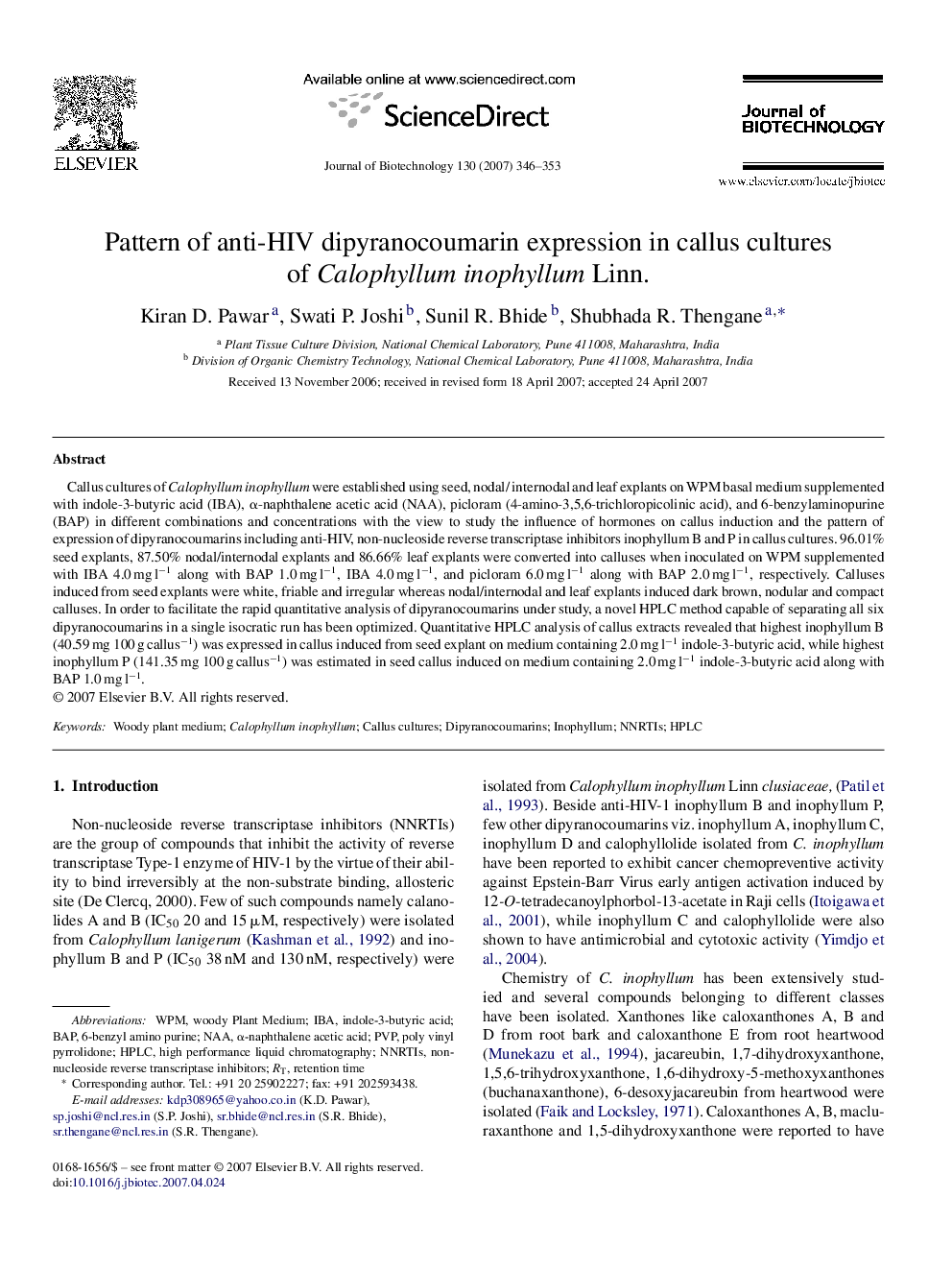| کد مقاله | کد نشریه | سال انتشار | مقاله انگلیسی | نسخه تمام متن |
|---|---|---|---|---|
| 25186 | 43559 | 2007 | 8 صفحه PDF | دانلود رایگان |

Callus cultures of Calophyllum inophyllum were established using seed, nodal/ internodal and leaf explants on WPM basal medium supplemented with indole-3-butyric acid (IBA), α-naphthalene acetic acid (NAA), picloram (4-amino-3,5,6-trichloropicolinic acid), and 6-benzylaminopurine (BAP) in different combinations and concentrations with the view to study the influence of hormones on callus induction and the pattern of expression of dipyranocoumarins including anti-HIV, non-nucleoside reverse transcriptase inhibitors inophyllum B and P in callus cultures. 96.01% seed explants, 87.50% nodal/internodal explants and 86.66% leaf explants were converted into calluses when inoculated on WPM supplemented with IBA 4.0 mg l−1 along with BAP 1.0 mg l−1, IBA 4.0 mg l−1, and picloram 6.0 mg l−1 along with BAP 2.0 mg l−1, respectively. Calluses induced from seed explants were white, friable and irregular whereas nodal/internodal and leaf explants induced dark brown, nodular and compact calluses. In order to facilitate the rapid quantitative analysis of dipyranocoumarins under study, a novel HPLC method capable of separating all six dipyranocoumarins in a single isocratic run has been optimized. Quantitative HPLC analysis of callus extracts revealed that highest inophyllum B (40.59 mg 100 g callus−1) was expressed in callus induced from seed explant on medium containing 2.0 mg l−1 indole-3-butyric acid, while highest inophyllum P (141.35 mg 100 g callus−1) was estimated in seed callus induced on medium containing 2.0 mg l−1 indole-3-butyric acid along with BAP 1.0 mg l−1.
Journal: Journal of Biotechnology - Volume 130, Issue 4, 15 July 2007, Pages 346–353